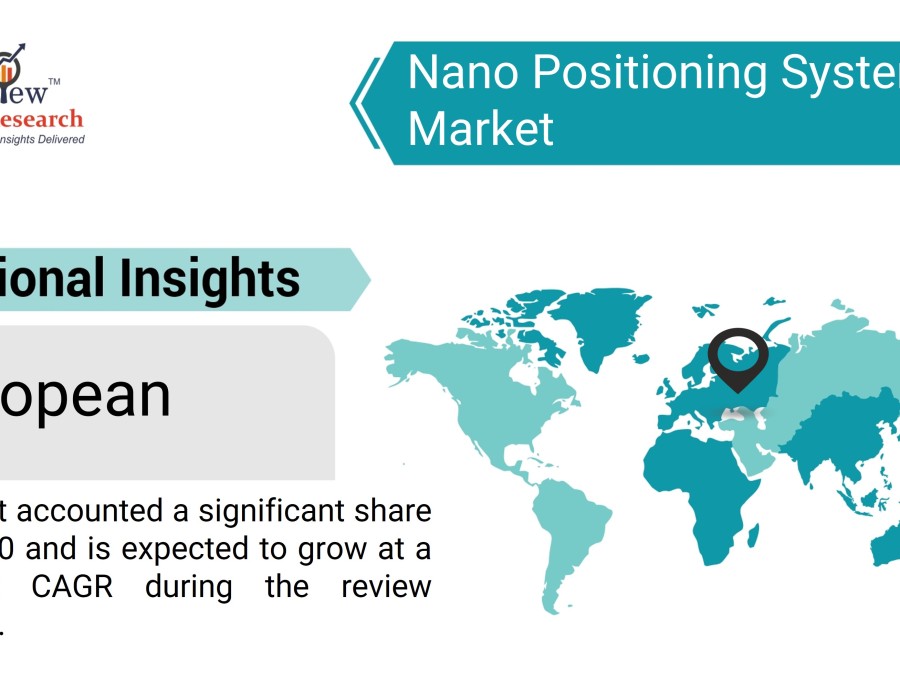The demand for nano positioning systems, which offer precise movement and positioning at the nanometer scale, is on the rise across multiple industries. These systems are crucial for applications requiring high precision, such as semiconductor manufacturing, biotechnology, and advanced manufacturing. Understanding the key drivers behind this growing market helps elucidate the factors contributing to its rapid expansion and the opportunities it presents.
According to Stratview Research, the nano positioning systems market was estimated at USD 84.5 million in 2020 and is likely to grow at a CAGR of 10.9% during 2021-2026 to reach USD 156.0 million in 2026.
1. Technological Advancements
Precision and Accuracy Enhancements One of the primary drivers of the nano positioning systems market is the continuous advancement in technology. Innovations in sensor technology, actuator design, and control algorithms have significantly enhanced the precision and accuracy of these systems. High-resolution feedback mechanisms, such as interferometers and laser encoders, enable real-time adjustments, ensuring movements with sub-nanometer precision. These improvements are essential for applications in semiconductor manufacturing, where even minute errors can lead to significant defects.
Miniaturization and Integration The trend towards miniaturization in various sectors, including electronics and medical devices, has fueled the demand for compact and integrated nano positioning systems. The development of smaller, more efficient components allows these systems to be incorporated into increasingly tiny devices, which is critical for nanomedicine and microelectronics applications.
2. Increasing Demand from High-Precision Industries
Semiconductor Manufacturing The semiconductor industry is a significant consumer of nano positioning systems. The need for precise alignment and placement of components during processes such as lithography and wafer inspection necessitates the use of highly accurate positioning systems. As the demand for advanced electronic devices continues to grow, so does the need for precision manufacturing tools.
Biotechnology and Medical Research In biotechnology and medical research, nano positioning systems are used for tasks such as single-molecule manipulation, cell imaging, and the development of diagnostic devices. These applications require extremely precise movements to ensure the accuracy and reliability of results. The expanding field of nanomedicine, which involves working at the molecular and cellular levels, further drives the demand for these systems.
3. Adoption in Advanced Manufacturing
Precision Machining and Additive Manufacturing Advanced manufacturing processes, including precision machining and additive manufacturing, rely heavily on nano positioning systems to achieve high accuracy and repeatability. These systems allow for precise control of tool paths and component placement, resulting in higher quality products and reduced manufacturing defects. As industries continue to adopt more advanced manufacturing techniques, the demand for nano positioning systems is expected to rise.
4. Research and Development Initiatives
Scientific Research Scientific research in fields such as nanotechnology, materials science, and physics heavily depends on nano positioning systems. These systems enable researchers to manipulate and study nanostructures with high precision, facilitating breakthroughs in fundamental science and the development of new technologies. Increased funding and focus on R&D activities further stimulate the market for nano positioning systems.
Conclusion
The nano positioning systems market is driven by technological advancements, increasing demand from high-precision industries, adoption in advanced manufacturing, and robust research and development initiatives. These factors collectively contribute to the growing need for highly accurate positioning systems across various sectors. As technology continues to evolve, the nano positioning systems market is poised for significant growth, offering numerous opportunities for innovation and development.






Comments